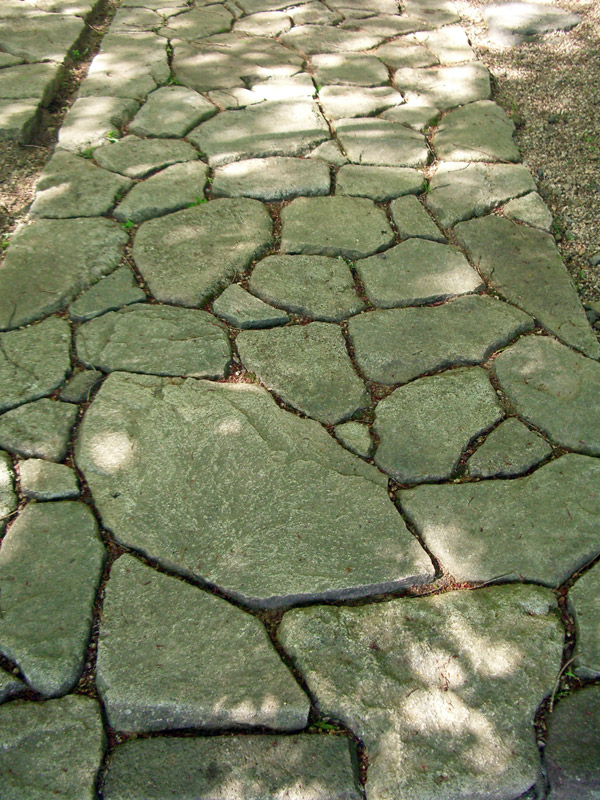| A stone
cutting technique for paving stones. According to certain tea ceremony sources
various sized stones were used for tea ceremony gardens as well as gravel
paving, *ishidan Ξi,
and *nobedan i, Nobedan
are natural stones and gravel arranged into a style called *ararekoboshi
θΕλ΅. Shiki-ishi also incorporates processed stones to produce various
patterns: grid paving gobanmejiki ιΥΪ~; stones arranged in rows
heiretsujiki ΐρ~; straight line paving chokuretsushiki Όρ~;
diamond joint paving shihanmeshiki lΌΪ~. Sometimes small rectangular
stones lined up in rows, or in a straight line. Another pattern is called
the cracked-ice pattern *hyouretsumon XτΆ, because it has irregular cracks
like those found in ice. There is also a hexagonal pattern. |



